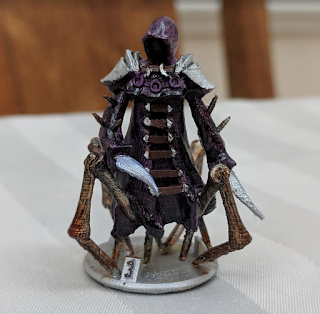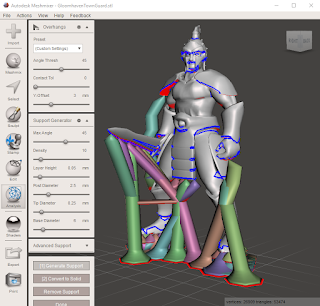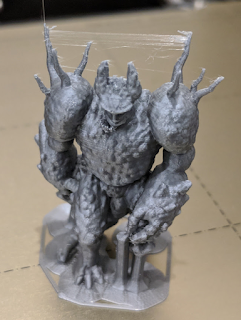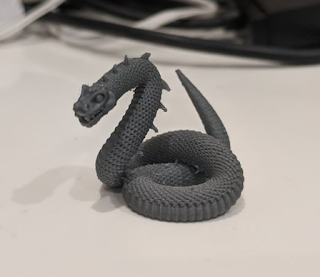New Thing: Harrower Infester for Gloomhaven!

I've made a new thing - a Harrower Infester model for Gloomhaven ! I think that this is my best creation, yet! I feel like I'm really homing in on a balance between parametric design and sculpting that's working well for me. When I made this model, I used the "extruded cube" method to make the shape of the main robe, with completely separate extruded cubes for the arms. I then made the cowel, pauldrons, knives, legs, spikes, and all of the little details as separate meshes, which I arranged on the main robe. When I didn't like where something was or how it looked, I moved that something around to get it into a better place. To that end, I want to talk specifically about the insect legs that I made for this guy. Those legs are remarkably parametric. I went over the robe pretty heavily with Blender's sculpting tools, in order to add the folds and creases in the fabric... but those legs are pure parameterized geometry! Here's a screenshot o...







